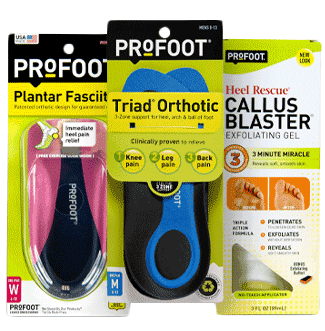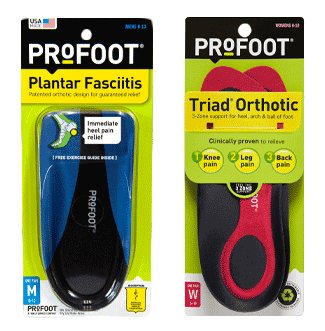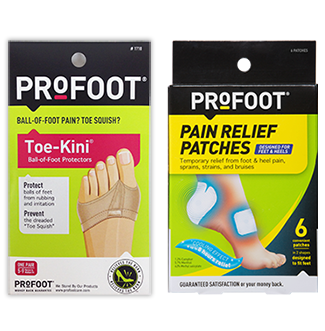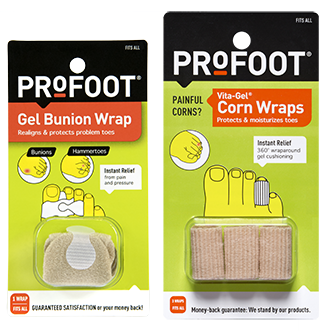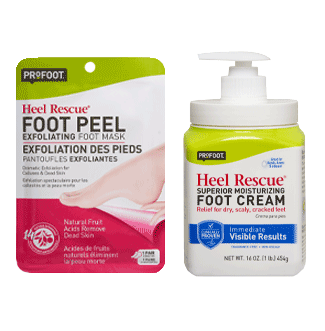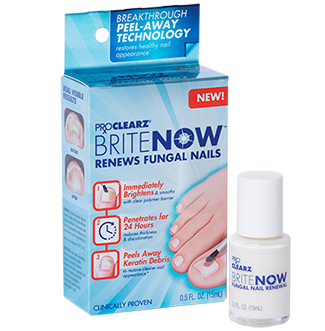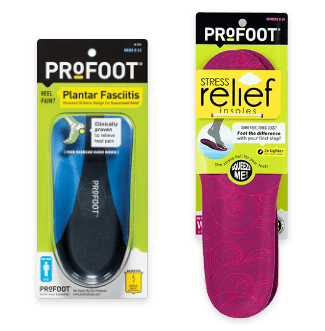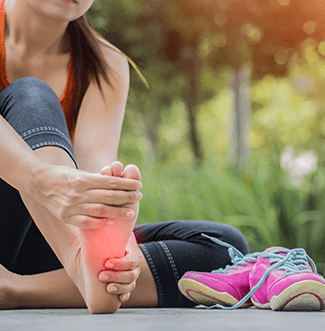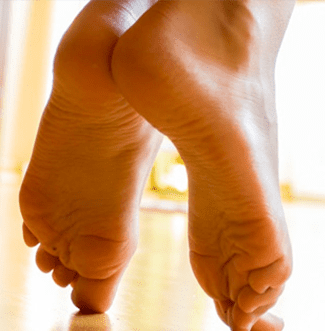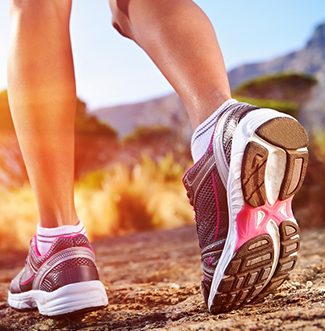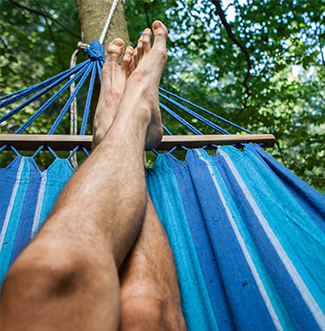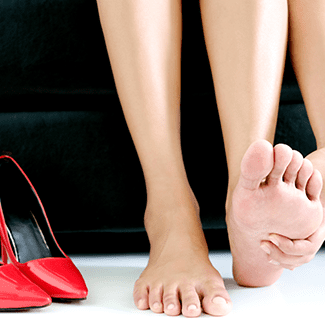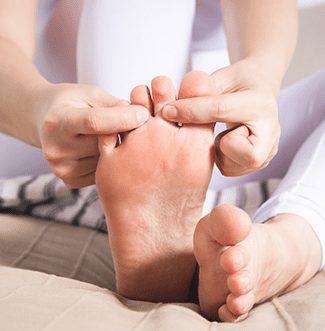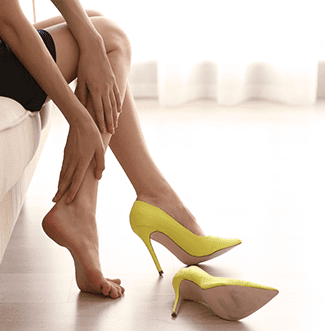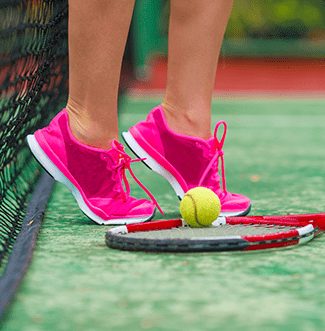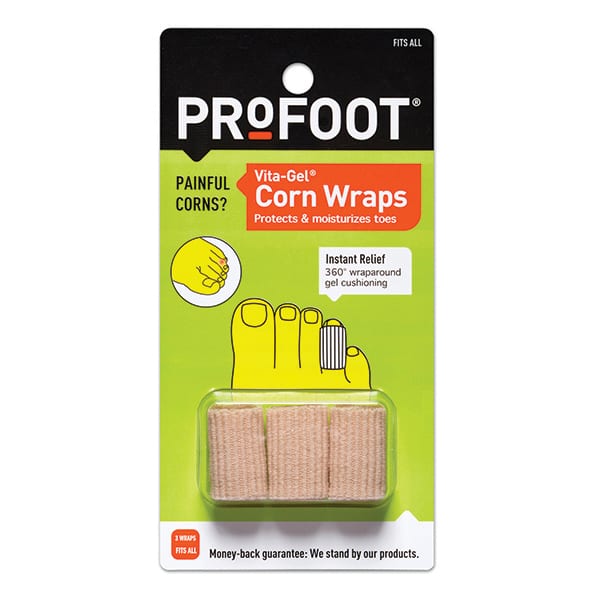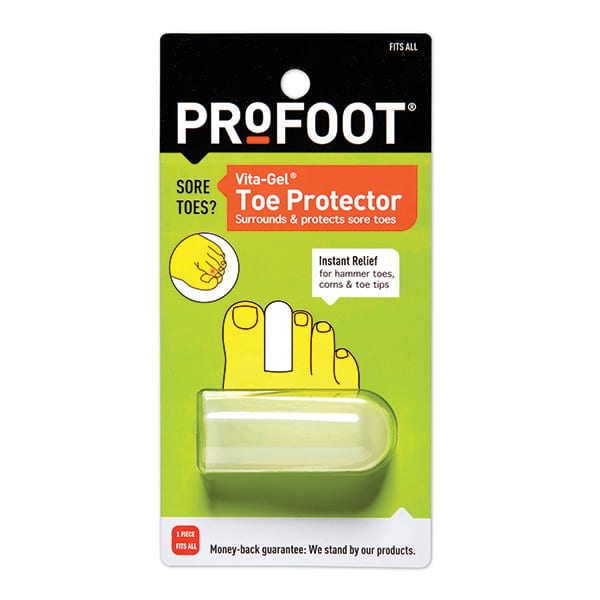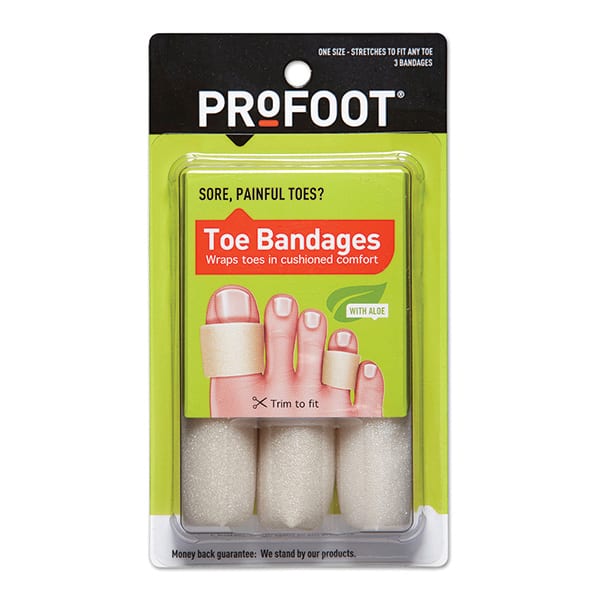Foot Corns
What is a Corn?

Bottom of feet and toe region
Corns are round areas of thickened skin on your toes and feet that develop due to repeated pressure on the skin, caused by the rubbing of your toes against the interior of your shoe. Generally calluses form on the bottom of your feet or toes, while corns form on the top or between the toes. In many cases, foot corns and calluses go away gradually once the friction or rubbing stops.
What Causes a Corn?
Shoes that are too tight or too worn can cause corns from the constant rubbing and pressure of your skin against the leather or other material inside a closed shoe or boot, or from the straps of sandals—any place a blister can form. Foot corns—and calluses—are the body’s way of preventing blisters. Corns can also be caused where an enlarged toe joint—or bunion—pushes the big toe into the smaller toes. Corns are not always painful at first, but can become irritated and painful over time.
Excessive pressure or rubbing
Foot corns tend to form in areas where the feet experience excessive pressure or rubbing. You may find them along the bottom of your foot, the ball of your foot, and between your toes. Corns can also form on or along the outside of your little toe where your shoe rubs against it. They may also form on the tops of your toes, especially if you have hammertoes.
You may find foot corns are painful when pressed. Depending on where on the foot they have developed, they may make it difficult to walk or run.
What is a Callus?
A foot or toe callus is a thickened layer of skin that forms in response to constant pressure and repeated rubbing of the skin against a shoe or sock. Calluses vary in location and size and aren’t necessarily painful. Excessive pressure on the balls of the feet—such as from the angle produced by very high heels—can create painful calluses on the balls of the feet. Calluses can also form on the heels due to plantar fasciitis, and bunions can cause painful calluses to form on the outer edge of the big toe.
How to Treat Corns and Calluses
There are a number of do-it-yourself treatments for corns and calluses:
- Soak, soften, and file. Soak your feet in warm water and use a pumice stone or callus file to reduce corns and calluses. Gently move the stone in a circle or side-to-side to remove dead skin. You can do this in the shower too.
- Moisturize your feet every day. Look for a deep moisturizing lotion or cream that will help soften corns and calluses.
- Callus pad. Cut a piece or two of moleskin and fit it around the callus to protect against further irritation and friction.
- Open toes. If you have a painful corn, sandals or open toe shoes can be more comfortable.
Corn or callus removal: do not try this at home
Softening and pumicing corns and calluses is fine, but do not try to actually remove a corn yourself. Avoid so-called “medicated corn pads,” especially between toes. These pads can cause a serious infection. And never cut or “slice” a corn or callus; you could cause serious bleeding, injury, and infection. Consult a doctor or podiatrist if corns or calluses become extremely thick, unsightly, or painful.
Inserts and Padding for Corns and Calluses
Protect your skin and help heal corns and calluses with moisturizing toe wraps and plenty of padding. And use a safe, effective callus remover.
- PROFOOT Vita-Gel Corn Wraps—Wrap and protect your toes in any shoe. The slim, low fit provides wrap-around gel cushioning that protects and moisturizes toes. They’re washable, reusable, and adhesive-free, providing pain relief for weeks at a time.
- PROFOOT Toe Beds—These ball of foot gel pads cradle each toe plus the ball of foot and feature a raised toe bed that gently positions your toes to prevent the painful corns, foot fatigue, and callus formation that can often lead to metatarsalgia. They provide all-day comfort in all kinds of shoes for your toes and metatarsals.
- PROFOOT Bottom of the Foot Cushion—This ball of foot gel cushion works as a shock absorber to relieve metatarsalgia pressure, providing comfort and relief from ball of foot pain. Using PORON® technology to provide maximum comfort, this expertly designed orthotic absorbs shock and helps prevent calluses from forming on the bottom of the foot.
- PROFOOT Heel Rescue Foot Cream—This superior moisturizing foot cream with Argan oil is specially formulated to penetrate, moisturize, and repair even the toughest cracks and calluses. And the non-greasy, fragrance-free formula will leave your feet feeling soft, silky-smooth, and revitalized.
